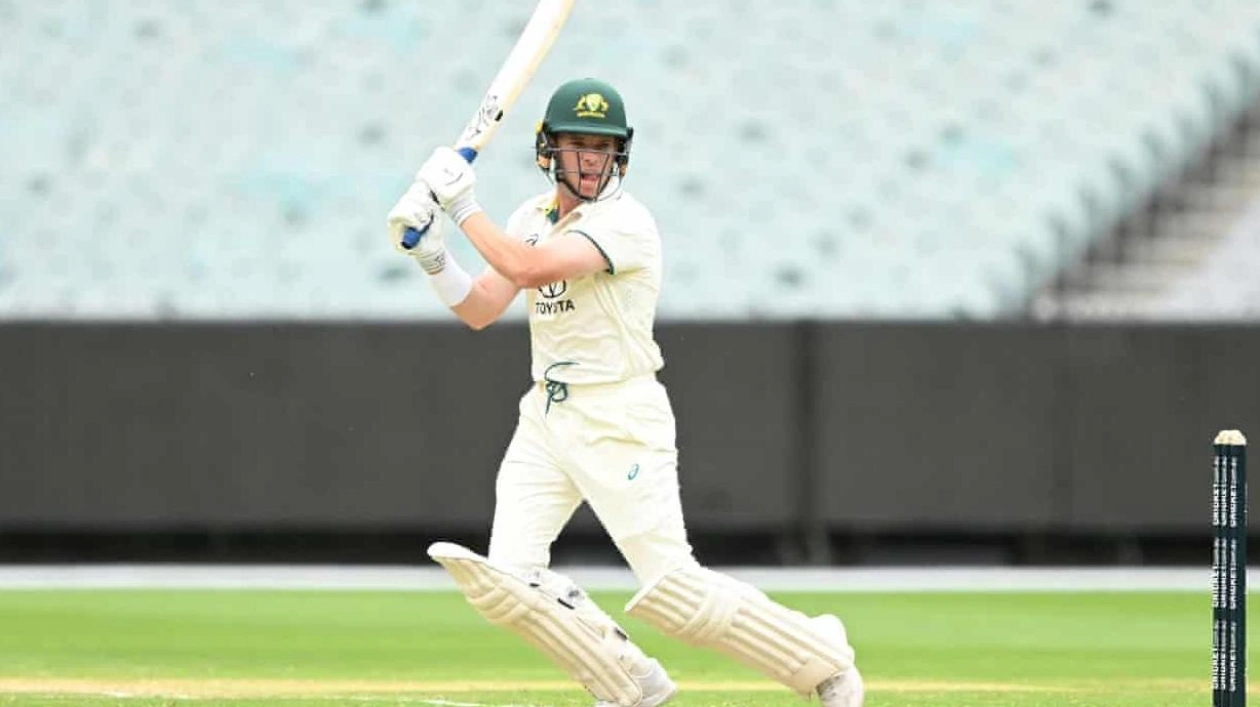With his face concealed by the grill of his helmet, only Marcus Harris knows the emotions he experienced the moment the formidable Australian bat swung his way. Australia A captain Nathan McSweeney—Harris’s chief rival for the vacant Test opening position—had just been dismissed softly against India A, caught in the slips for 14 in Melbourne’s mid-afternoon gloom. As McSweeney turned and walked, Harris almost instinctively lowered his head, a subtle nod to the significance of the moment. He scurried back onto the pitch, sacrificing practice shots at the non-striker’s end to the cricketing gods. By the time he strolled away and removed his helmet, his expression remained inscrutable. But it was evident he wasn’t shedding any tears. Harris has long been the next man up for the Australian team. He averages nearly 40 in first-class cricket but barely 25 across 14 Tests. Good, yet never quite good enough to secure his place in the national side.
Indeed, his eyes were so dry a few overs earlier that Harris had used eye drops to keep them lubricated. The 32-year-old relinquished his focus on red-ball cricket this season, a gesture many interpreted as an acknowledgment that his Test window might have closed. He sought the help of his own sports psychologist to maximize the final phase of his career. Yet, agency in cricket can be overrated. On Thursday, Harris watched his career prospects rise from the non-striker’s end. He survived but hardly thrived against the Indian attack, accumulating 26 not out off 42 deliveries. Not long after McSweeney’s dismissal, Cameron Bancroft—the other veteran contender for the spot—pulled a shot straight to mid-wicket and was dismissed for just three. Sam Konstas, the final contender, survived until rain ended play early. Most agree the 19-year-old’s day will come. But for Harris, the time is now, and the afternoon’s play sets up Friday to be decisive.
Before the late drama, the 200-odd cricket enthusiasts inside the MCG were forced to wait. The historic ground feels odd when empty, its vast expanse bare except for two large white sheets beyond each bowler’s arm. Watching this day’s play felt almost like an invasion of privacy, a kind of Cricket Australia-endorsed voyeurism. Having the four players compete as teammates for the vacant opening position was cruel but compelling. Like Australian Survivor, but with bats. At one point late in the morning session, McSweeney, Bancroft, and Harris stood three abreast in the slip cordon. The interactions seemed cordial, but in such circumstances, mountains can rise from molehills. Bancroft wore the white floppy hat, while Harris and McSweeney—widely tipped as favorites—wore what looked like baggy greens already.
The captain placed Konstas, who most consider out of the running after his failures in the weekend’s match in Mackay, in the outfield. With one rival out of the picture, McSweeney thrust himself into the spotlight, bringing himself on to bowl and removing India’s danger man, Dhruv Jurel, with his quaint off-breaks. Despite the hype around the top of the Australian order, Jurel looms as a player who could yet have a significant impact on the Border-Gavaskar Trophy. The backup keeper was brought to Australia early to acclimatize to local conditions. He played three Tests against England earlier in the year, averaging 63.33 with a top score of 90, and some have called for his selection alongside incumbent Rishabh Pant. Jurel’s composed 80 will only amplify those calls.
While the second of the four-day tour matches was expected to dictate the direction of Australia’s summer, none foresaw its most immediate impact. Michael Neser, another likeable reserve who could yet provide vital support in the five-Test series, limped off the field late in the Indian innings grimacing. The fast bowler had rewarded those who arrived early for the bat off, but were dismayed when McSweeney chose to field. Neser’s brutal first over almost delivered a hat-trick, and his opening spell appeared to cement his place as next man-up in the Australian bowling stocks. But after he hopped to a stop in his 13th over, what looked like a serious hamstring strain clouds the Australian summer.
In the end, this almost significant day belonged to the nearly man of Australian cricket. The so-called “bat off” is a lightly comedic description of the four-way contest, deeply unsympathetic to what appears to be the defining examination of Harris’s long career. To thousands of hours spent honing a craft, in nets from Perth to Melbourne and county cricket in England, and millions of balls hit. Yet through all his peaks and troughs, slumps and spikes, there is a beauty in the simplicity of Harris’ predicament: a hefty score on Friday will make him almost impossible for the selectors to overlook. May the bat off continue.
Source link: https://www.theguardian.com






